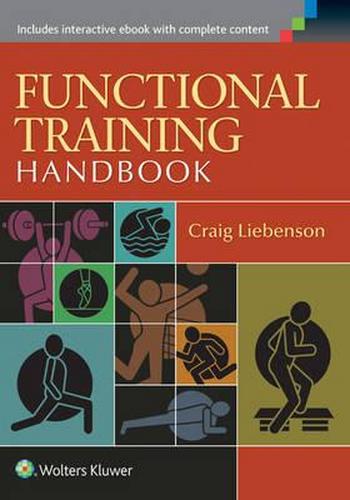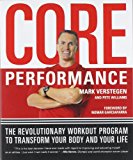Note:
This is a blog (3/17/14) from before my website crashed & burned. I’ve lost the photos, but was able to reclaim the text. Thanks to Peter Ingelton I’ve resurrected it. I’m sure it’s in need of re-writing & updating but in any case enjoy & please comment to help make it more accurate & helpful.
The Problem
How much should an athlete dedicate to general strength? At what point is it more efficient to focus on skill, competition, power, etc..
Naturally, the right answer is that IT DEPENDS. For instance on –
- Age
- Sex
- Sport
- Injury History
- etc.
However, since every trainer & athlete has only so much time to invest in training it is crucial that the goals are established & prioritized so that a PLAN can be made & executed to best achieve those goals. Most important is that barriers & facilitators the plan are identified and a “problem-solving” approach brainstormed to find the best path for each individual.
“If your muscle fibers become stronger, fewer are needed to sustain a sub-maximal work output (creating) a greater reserve to extend the sub-maximal effort.”
Mat Brzycki
“The ability to prioritize training components, objectively time and measure the impact of the work asigned, and to adjust workloads accordingly is the cornerstone of any reasonable training program.”
Charlie Francis – The Road to HIT is Paved with Good Intentions
“ask a strength coach what a good bench press is for a 200 lb male and chances are you’ll get a good answer. Maybe everyone won’t be in agreement but, everyone will have an opinion.”
Bench & Clean #’s – 1.25 to 1.5 x’s BW ( 250-300 for a 200 lb athlete)
Front Squat ( we don’t back squat) 1.5-1.75 ( 300-350 for 200 lb.)
1 Leg Squat ( see video) .5 x BW for 5 reps ( half of your bodyweight)
“When you have done general strength up to the numbers most people do – 170/180-kilogram clean, 120/130-kilogram snatch, 200/220-kilogram bench press, and 250+ squat – it is enough. You can’t really use the strength after that. You have enough to throw 70 meters. But people might be throwing only 62 meters so I stop that development and try to get the specific strength and specific speed to be better.”
Al Vermeil says athletes should have the following Back Squat minimums –
- Males – 150-200% of body weight
- Females – 140-180% of body weight
I’m very curious what S&C and athletic development experts opinions are. In particular,
- what general tests they like to perform to establish baselines – i.e. bench press, squat, dead lift?
- what #’s they like to see in different populations (youth, elderly, male/female, different sports, etc)?
What specific role does strength play for an athlete?
Strength is important in general. But, what is it’s specific role for the athlete? Al Vermeil & Mark Versteegen both appear to suggest that it relates to initial acceleration.
“If you athletes lack the burst in their acceleration, strength deficits should be looked at as a possible contributed… remember you can’t get to third gear if you can’t get out of first gear. Strength and starting strength are absolute prerequisites before other, more advanced training modalities”
Al Vermeil
“You can be strong without being powerful (because you can’t get that strength into motion quickly), but you can’t be powerful without having underlying strength of muscles and muscle groups.”
“Explosive power can only be optimized during the maintenance phase of an organized weight program after maximum strength is already in place. The maintenance phase extends the period over which maximum strength can be maintained while allowing the entire organism to super-compensate. Maintenance phase lifting consists of slightly sub- maximal weights in numbers well below maximum rep capacity.”
Charlie Francis – The Road to HIT is Paved with Good Intentions
General Physical Preparation
General strengthening is important especially for the developing athlete. It should occur BEFORE a young athlete has begun to specialize in a single sport. For the sake of safety it should progress gradually.
“For developing athletes it is crucial to build a strong base without their burning out or experiencing an injury. This process can take years to achieve. ”
C Liebenson, R Page Principles of Athletic Development in The Functional Training Handbook, 2014.
“Five to eight years of correct training is required before an athlete’s potential becomes apparent…ages 14–20 are spent laying the foundation for high performance.”
Francis C. The Charlie Francis Training System. 2012.
Safety Considerations
“In order to prevent injuries in the actual training process, we need to minimize risk. This does not mean eliminate risk, only minimize it. Everything you want to include in the program must be analyzed in terms of risk-to-benefit ratio.” (Boyle)
Boyle M. Advances in Functional Training. Aptos, CA: On Target Publications; 2010.
“No doubt, the concept of an injury- free training environment is appealing. The pursuit of this goal led to the development of the universal gym and every other “machine” we see today.”
“linemen reside on the extreme left hand side of the strength to endurance continuum, along with shot-putters and weight- lifters. Their ability to deliver incredible force makes them by far the most vulnerable to the over-training that can result from a coach’s attitude…”
Charlie Francis – The Road to HIT is Paved with Good Intentions
How to Progress the Youth Athlete?
According to Francis, “In the more mature athlete the focus of core work is on developing power – explosive power – through high intensity work, but when working with youngsters both circuit and core work are directed at building muscle or increasing muscle cross-section via high volume, medium intensity work (e.g. 3 to 5 sets of 5-15 repetitions at 65-75% of maximum load).”
A Specific Example – Sprinting
“Resisted sprints up to 30meters (generating no more than a 10% slowing of best time) will not alter sprint mechanics, and, when mixed with un- resisted runs, can generate significant gains in acceleration performance. Likewise, short sprints up a slight grade will help an athlete to improve his mechanics by allowing him to achieve optimum joint angles before he can generate enough acceleration to achieve them on a flat track.”
Charlie Francis – The Road to HIT is Paved with Good Intentions
Finally
“Bear in mind that the goal is not to become the best weight lifter but to lift weights in order to build strength, armor, and most of all power in one’s sport or activities. “ Liebenson C, Page R
“Iron is the means not the goal…. The strength regimen must deliver great strength gains without exhausting the athlete’s energy or time.”
Easy Strength
Related Links
Charlie Francis – The Road to HIT is Paved with Good Intentions
Mike Boyle – “A Strength Question?”
Mike Boyle – How Strong is Strong?
Mike Reinold on Off-Season Training in Baseball
Louie Simmons interview on Absolute Strength
Drew Rossi (LMU Basketball S&C Coach) – In Strength – Do We Consider Durability?
Bigger, Stronger, Faster – What is the Function of Armour?
How Can We Make our Athlete’s More Powerful
How Can We Make our Athlete’s More Powerful






